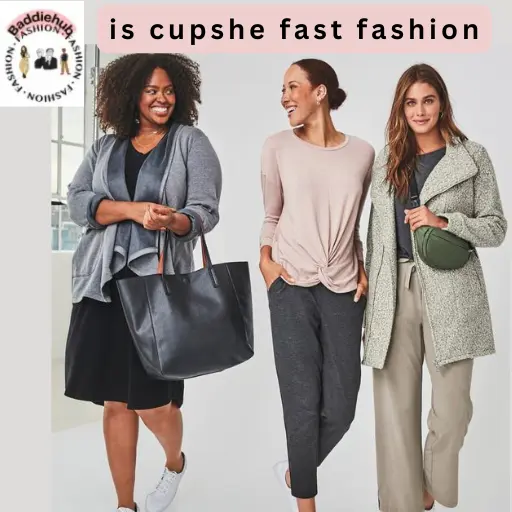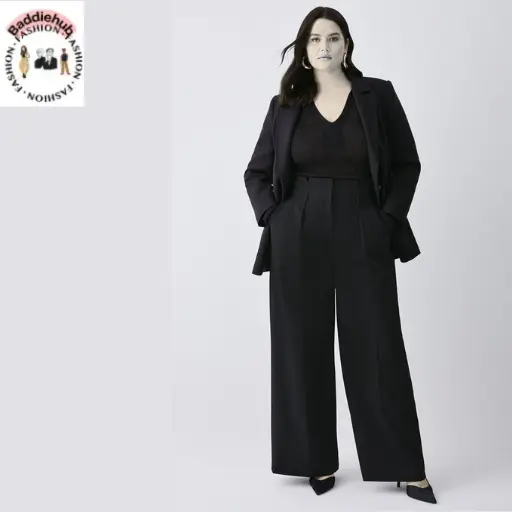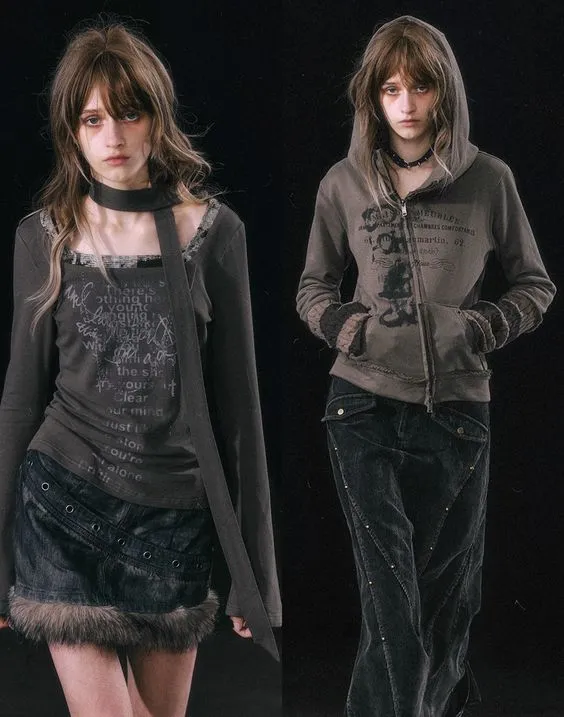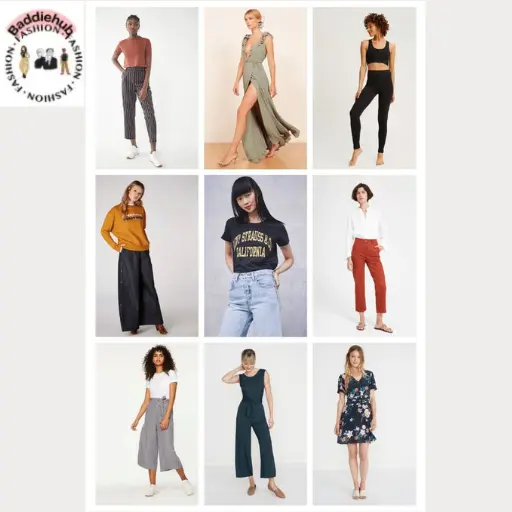Intro: Is Cupshe a Fast Fashion Brand?
is cupshe fast fashion? Exploring Its Impact on Affordable Style and Trends Recently, fast fashion has transformed the way we shop, offering trendy clothing at accessible prices for the everyday consumer. Among the brands leading this revolution is Cupshe, a standout name known for its stylish swimwear and chic outfits. With an extensive product range that appeals to diverse body types and fashion tastes, Cupshe has carved a niche in the competitive fast fashion landscape.

As consumers become increasingly conscious of their purchasing decisions, it’s essential to explore the implications of fast fashion on sustainability and ethical practices. Cupshe stands at a crossroads, balancing affordability with responsibility. In this article, we will delve deep into the brand’s mission, its innovative sustainability efforts, and how it aims to redefine the future of fast fashion. By the end of this article, readers will have a clearer understanding of how Cupshe is not only meeting the demands of today’s shoppers but also paving the way for a more sustainable and ethical fashion industry. Join us on this journey to discover what Cupshe has to offer and how it positions itself in the ever-evolving world of fashion.
The rise of Cupshe as a fast fashion brand has gained significant attention
Fast fashion has revolutionized the apparel industry, enabling brands to produce clothing at an unprecedented speed and cost-effectiveness. This rapid manufacturing cycle has made trendy styles accessible to a broader audience. Notably, Cupshe has emerged as a prominent player, offering stylish swimwear and chic outfits that resonate with fashion-forward consumers. The brand captures the essence of fast fashion while catering to diverse body types and preferences. At the core of Cupshe’s rise is its ability to identify and adapt to evolving fashion trends quickly.

Brand History and Establishment of Cupshe
Cupshe was founded in 2015 with the vision of creating a brand that speaks to the modern woman’s desire for fashionable, affordable swimwear and casual apparel. Recognizing a gap in the market for stylish options that cater to diverse body types, Cupshe set out to provide high-quality, trendy designs that empower women to feel confident and beautiful. Initially focused on swimwear, Cupshe quickly garnered attention for its vibrant prints, flattering fits, and inclusive sizes. The brand’s commitment to understanding and meeting the needs of its customers allowed it to grow rapidly, cultivating a loyal following on social media and various online platforms. As its popularity soared, Cupshe expanded its product range to include clothing beyond swimwear, including activewear, beach cover-ups, and casual outfits.
Cupshe Core Mission and Vision Statement
Mission Statement
Cupshe’s mission is to empower women by providing stylish, affordable, and high-quality fashion that embraces diverse body types and personal styles. We are committed to creating accessible clothing options that inspire confidence and self-expression, making every woman feel beautiful and unique. Through exceptional customer engagement and sustainable practices, we strive to cultivate a community where individuals can share their love for fashion and support one another on their journeys of self-discovery.
Vision Statement
Cupshe envisions a world where every woman feels confident and beautiful in her own skin, with fashion that celebrates her individuality. We aspire to be a global leader in women’s apparel, renowned for our innovative designs and commitment to inclusivity, sustainability, and affordability. Our goal is to create a vibrant, supportive community that transforms the fashion landscape, encouraging women everywhere to embrace their strengths and express themselves boldly through their wardrobe choices.
Sustainability Efforts at Cupshe
In recent years, the fashion industry has come under scrutiny for its environmental impact, particularly within the realm of fast fashion. As consumers become more conscious of their buying habits, brands are challenged to adopt sustainable practices to reduce waste, promote ethical production, and minimize their carbon footprint. At Cupshe, our commitment to sustainability sets us apart from other fast fashion brands, allowing us to lead by example in the industry.
Comparisons with Other Fast Fashion Brands
While many fast fashion brands prioritize rapid production and trend-chasing, they often do so at the expense of environmental responsibility. Many of these companies rely on non-renewable resources, utilize harmful manufacturing processes, and produce clothing that contributes significantly to landfill waste. In contrast, Cupshe is dedicated to transforming the fast fashion model by integrating eco-friendly practices into our operations. Unlike some fast fashion competitors that use synthetic fibers and non-sustainable materials, Cupshe actively seeks to incorporate sustainable fabrics into our collections. Additionally, while other brands may not provide transparency regarding their supply chains, we strive to offer insight into our ethical sourcing practices and the origins of our materials.
Specific Sustainability Initiatives by Cupshe
Cupshe takes a multifaceted approach to sustainability, implementing several key initiatives that demonstrate our commitment to eco-friendly practices and responsible production. Here are some highlights of our sustainability efforts:
- Sustainable Materials: We prioritize the use of organic cotton, recycled polyester, and other sustainable fibers in our collections to minimize our environmental impact. By sourcing eco-friendly materials, we aim to reduce water consumption and lower carbon emissions associated with traditional textile production.
- Eco-Conscious Packaging: Cupshe is dedicated to reducing plastic waste by utilizing eco-friendly packaging solutions. Our packaging is made from recyclable materials, and we are continually seeking innovative ways to further reduce our environmental footprint.
- Waste Reduction Programs: We are committed to minimizing waste throughout our production process. This includes optimizing our cutting processes to reduce fabric waste and encouraging consumers to recycle or donate their clothing to extend its lifespan.
- Empowering Ethical Manufacturing: Cupshe partners with manufacturers that adhere to ethical labor practices and provide safe working environments for the workers. We believe that fashion should not come at the cost of human dignity and strive to ensure fair wages and working conditions throughout our supply chain.
- Sustainability Education and Transparency: We actively engage with our community to share the importance of sustainability in fashion. Through blog posts, social media campaigns, and product transparency, we educate our customers about our eco-friendly initiatives and encourage them to make informed choices.
The Importance is cupshe fast fashion
Embracing eco-friendly practices in fashion is essential for several reasons:
- Reducing Environmental Impact: The fashion industry is one of the largest polluters globally, and fast fashion contributes significantly to environmental degradation. By integrating sustainable practices, brands can help mitigate climate change, reduce water waste, and lessen the reliance on finite resources.
- Promoting Ethical Consumerism: As consumers become more aware of the impact of their purchases, there is a growing demand for brands that prioritize sustainability and ethical methods of production. By adopting eco-friendly practices, Cupshe aligns itself with consumer values, fostering trust and loyalty among our customer base.
- Encouraging Circular Fashion: Sustainable practices promote the concept of circular fashion, where clothing is designed for longevity and can be recycled or repurposed at the end of its lifecycle. By creating garments that are meant to last and encouraging our customers to recycle, we contribute to a more sustainable fashion ecosystem.
- Inspiring the Industry: As a brand committed to sustainability, Cupshe seeks to inspire other fashion companies to adopt similar practices. By leading with transparency and a commitment to eco-friendly initiatives, we can encourage widespread change across the fashion landscape.
- Raising Awareness: Our efforts to implement sustainable practices not only benefit the environment but also serve as a platform for raising awareness about the importance of eco-friendly fashion. Educating consumers about making informed choices can create a ripple effect, driving further demand for sustainability in the industry.
Ethical Practicesis cupshe fast fashion
In an era where ethical consumption is becoming increasingly important, the fashion industry faces significant challenges regarding labor practices and worker treatment, especially within the fast fashion sector. Many brands have been criticized for prioritizing profit over the welfare of their employees, leading to poor working conditions, inadequate wages, and exploitation. At Cupshe, we recognize the importance of ethical practices and strive to uphold a standard of transparency and responsibility throughout our production processes.

Labor Practices and Worker Treatment Is Cupshe a fast fashion
The fast fashion model often relies on a swift production cycle that can result in overlooking the rights and well-being of workers. Reports of unsafe working environments, long hours, and unfair wages continue to plague the industry, raising alarm among consumers and advocacy groups alike. As awareness of these issues grows, consumers are more inclined to support brands that prioritize ethical labor practices.
- Unsafe Working Conditions: Many workers in the fast fashion industry are subjected to hazardous environments with minimal safety protocols in place.
- Low Wages: Often, garment workers are paid less than a living wage, making it difficult for them to support themselves and their families.
- Excessive Hours: Many workers are required to work long hours without fair compensation, leading to burnout and health issues.
How Cupshe Ensures Ethical Production
At Cupshe, our commitment to ethical production begins with a thorough vetting process for our manufacturing partners. Here’s how we ensure ethical practices are upheld:
- Carefully Selected Partners: We partner with manufacturers who adhere to strict ethical standards, ensuring that their labor practices align with our core values. We prioritize suppliers who have transparent operations and fair treatment of their workers.
- Fair Compensation: Cupshe advocates for fair wages and working conditions for all workers involved in our production processes. We believe that every worker should receive a living wage that allows them to meet their basic needs.
- Safe Working Environments: We prioritize safety in the workplace and ensure our partners implement measures that provide a safe and healthy environment for their employees. Regular audits and checks help maintain these standards.
- Empowerment and Development: We believe in empowering the workforce we engage with by supporting training and development programs. This not only enhances their skills but also improves their quality of life and job satisfaction.
- Transparency Commitment: Cupshe is committed to transparency in our supply chain, providing insight into where and how our products are made. We believe consumers have the right to know the origins of the products they purchase and the conditions under which they were produced.
Certifications and Recognitions
While Cupshe is continually striving for improvement in our ethical practices, we acknowledge that certifications from recognized organizations can bolster our commitment to transparency and credibility. To date, we are in the pursuit of certifications and partnerships that can validate our ethical production standards. We aim to achieve recognition from organizations that specialize in fair labor practices and environmental sustainability. Some noteworthy certifications that we are working towards include:
- Fair Trade Certification: This certification verifies that products are made under fair labor conditions, ensuring that workers are treated ethically and paid fairly.
- Global Organic Textile Standard (GOTS): As we incorporate more sustainable materials into our collections, GOTS certification will highlight our commitment to organic textile production and ethical labor practices.
- WRAP Certification: The Worldwide Responsible Accredited Production (WRAP) certification indicates that a manufacturer adheres to ethical labor practices and standards, ensuring safe and humane working conditions.
Future Fashion Trends
As the fashion industry evolves, emerging trends are reshaping consumer preferences, production processes, and sustainability efforts. The intersection of technology, changing values, and environmental concerns is driving the future of fashion in exciting ways. Here’s a closer look at these emerging trends and predictions about the future.

Emerging Trends in the Fashion Industry
- Sustainable Materials: A significant trend is the increasing use of sustainable materials. From organic cotton to recycled polyester, brands are exploring eco-friendly textiles that minimize environmental impact. Innovations in fabric technology, such as bio-fabricated materials and plant-based dyes, are gaining traction and will continue to influence future collections.
- Circular Fashion: Circular fashion emphasizes the lifecycle of clothing, encouraging brands to design for longevity and end-of-life solutions. This trend involves upcycling, recycling, and designing pieces that can be easily disassembled and repurposed. Consumers are also engaging in clothing swaps and resale platforms, reducing waste and promoting a sustainable fashion culture.
- Technology Integration: Advances in technology are revolutionizing the fashion landscape. Augmented reality (AR) and virtual reality (VR) are enhancing shopping experiences, allowing customers to try on clothes virtually. Additionally, digital fashion shows and online try-ons are becoming common, reshaping retail experiences and reducing the need for physical samples and resources.
- Personalization and Customization: The demand for personalized products is on the rise, with customers seeking unique pieces that reflect their individual styles. Brands are leveraging data analytics and AI to provide personalized recommendations, allowing consumers to curate their wardrobes according to their preferences.
- Inclusivity and Diversity: The fashion industry is gradually shifting towards inclusivity in terms of size, gender, and cultural representation. Brands are beginning to offer a wider range of sizes and embracing diverse models in their marketing campaigns, catering to a broader audience and challenging traditional standards of beauty.
Predictions About the Future of Sustainable and Fast Fashion
- Continued Growth of Sustainable Practices: As consumers become more informed and conscious of their purchasing habits, the demand for sustainable fashion will only increase. Brands will likely invest more in sustainable sourcing, eco-friendly production methods, and transparency in their supply chains. This shift will compel fast fashion brands to adapt or risk becoming obsolete.
- Regulatory Changes: Governments and organizations around the globe are beginning to introduce regulations aimed at promoting sustainability in the fashion industry. Future predictions suggest stricter environmental policies, requiring brands to take responsibility for their environmental impact. This may include mandates on waste reduction, recycling initiatives, and ethical labor sourcing.
- Hybrid Models of Fast Fashion: Instead of the traditional fast fashion model, we may see the emergence of hybrid brands that combine affordable, trendy designs with sustainable practices. This approach could allow consumers to access style without compromising on ethical considerations, striking a balance between fast and sustainable fashion.
- Enhanced Consumer Engagement: As consumers demand more accountability from brands, companies will likely increase their engagement with customers. This will include sharing insights into production processes, ethical initiatives, and sustainable practices through storytelling and transparency efforts. Social media will continue to play a significant role in shaping brand narratives, driving consumer advocacy for sustainability.
- Technological Innovations in Sustainability: The future of fashion will see increased integration of technology to tackle sustainability challenges. Innovations such as 3D printing, digitized supply chains, and AI-driven inventory management could significantly decrease waste while offering brands the agility to respond to consumer trends faster.
Final Verdict on Cupshe and Fast Fashion
In summary, Cupshe is indeed part of the fast fashion landscape, characterized by quick turnaround times, affordable pricing, and a focus on current trends. While it meets the needs of fashion-forward consumers, it also presents ethical and environmental challenges that are important to consider. As consumers become increasingly aware of these issues, they may seek out more sustainable and ethical alternatives in their shopping choices.
For more information click here
